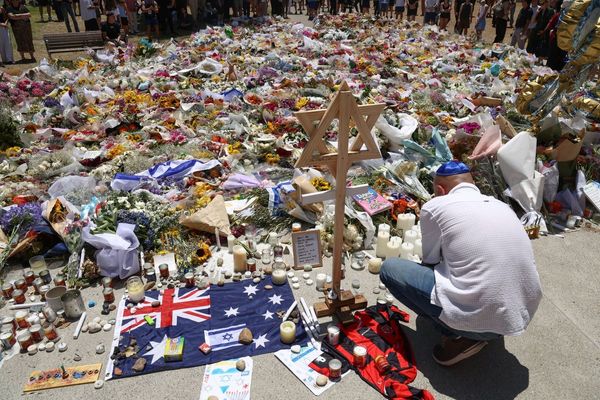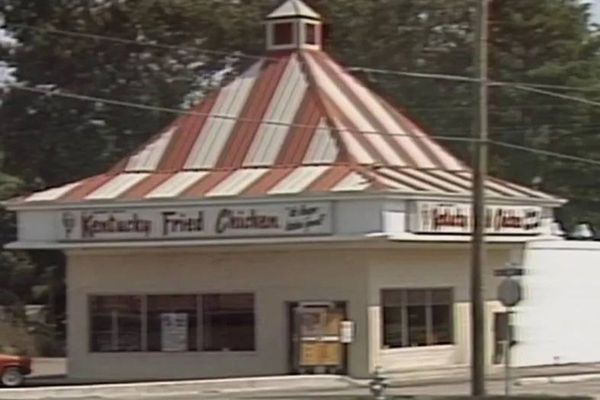They are neither as leafy nor as affluent as much of the Liberal heartland, but Peter Dutton believes the outer ring-roads of Australia’s capitals provide the most direct route to power. He has been telling his MPs these once-safe Labor-voting suburbs are where the 2025 election can be won.
From the moment the Queenslander assumed control of the Liberal Party in 2022, he was intent on this suburbs-first strategy, even if it seemed historically unlikely and involved repositioning his formerly business-loyal party as the new tribune of the working class. As he told Minerals Week in September 2023:
The Liberal Party is the party of the worker. The Labor Party has become the party of the inner city elite and Greens.
This has been Dutton’s long game. It’s an outsider approach reminiscent of what US President Donald Trump had achieved with disaffected blue-collar Democratic supporters in the United States, and what Boris Johnson managed by turning British Labour supporters in England’s de-industrialised north into Brexiteers and then Conservative voters.
Read more: Labor's in with a fighting chance, but must work around an unpopular leader
A political gamble
It was not the obvious play but it may prove the right one.
After a tumultuous period in which the Liberals had cycled through three prime ministers and ignored a clear public clamour for policy modernisation on women, anti-corruption and climate change, the Morrison government had been bundled from office.
Morrison hadn’t merely failed to attract disengaged undecideds in the middle-ground, but had haemorrhaged engaged constituents from some of Australia’s safest Liberal postcodes.
Nineteen seats came off the Coalition tally in that election, yet Labor’s gain was only nine.
Something fundamental had happened. Six new centrist independents now sat in Liberal heartland seats – all of them professional women.
Numerically, they formed a kind of electoral Swiss Guard around the new Labor government’s otherwise weak primary vote and thin (two-seat) parliamentary majority.
In a sharp visual contrast to the Coalition parties, women made up around half of Anthony Albanese’s new Labor government and he moved to prioritise the very things on which the Coalition had steadfastly refused to budge – including meaningful constitutional recognition of First Peoples.
Albanese, it seemed, had tuned in to the zeitgeist. He would even go on to break a 102-year record a year later, becoming the first PM to increase his majority by taking a set off the opposition in a byelection. One more urban jewel shifted out of the Liberals’ column.
Dutton, however, never blinked.
His first press conference as leader in 2022 had been notable for the absence of the usual mea culpa – a suitably contrite acknowledgement that he’d heard the message from erstwhile Liberals who had abandoned their party for more progressive community independents.
Instead, Dutton confidently responded that the 2025 election would be decided not in these comfortable seats but in the further-flung parts of Australia’s cities where people make long commutes to work and struggle to find adequate childcare and other services.
It was a bold strategy because it meant targeting seats with healthy Labor margins. Canberra insiders wondered privately if this was brave or simply delusional. Some concluded it could only work as a two-election strategy.
Many asked where a net gain of 19 seats would come from if not through the recovery of most or all of what became known as the “teal” seats?
Yet the combative Liberal continued to focus on prising suburbanites away from Labor with a relentless campaign emphasising the rising cost-of-living under Labor.
Three years later and even accounting for the first interest rate cut in over four years, it is Dutton’s strategy that has looked the more attuned to the electoral zeitgeist.
So much so that he goes into this election with a realistic chance of breaking another longstanding electoral record: that of replacing a first-term government.
This hasn’t been done federally since the Great Depression took out the Scullin Labor government of 1929-1931.
It’s all about geography
While only votes in ballot boxes will tell, the Coalition’s rebounding support appears to have come from the outer mortgage belt, just as he predicted.
These voters absorb their political news sporadically via social media feeds, soft breakfast interviews, and car-radio snippets.
These are media where Dutton’s crisp sound-bite messaging around cost-of-living pressures has simply been sharper and more resonant than Labor’s.
And it is by this means that these voters may have picked up that a Dutton government would seek to deport dual citizens convicted of serious crimes, stop new migrants from buying property (a policy first ridiculed as inconsequential by Labor and since copied), and cut petrol excise, temporarily taking around $14 off the price of a tank of fuel.
These voters may have noticed Dutton’s campaign against the supermarket duopoly, which includes the option of forced divestiture for so-called “price-gouging”.
Recently, he added insurance conglomerates to that divestment hit-list.
And they might have heard his dramatic nuclear “solution” to high energy costs and emissions (in reality, devilishly complex and expensive).
On top of these, semi-engaged voters might recall Dutton’s culture-war topics for which he has regularly received generous media minutes, including:
- his opposition to what he called “the Canberra Voice”
- his defence of Australia Day
- his refusal to stand in front of the Aboriginal and Torres Strait Islander flags
- his oft-made claim that a Greens-Teals-Labor preoccupation with progressive issues has left the cost-of-living crisis unaddressed.
Beyond such rhetoric, Dutton has had little to say in detailed policy terms. But will that matter? However comprehensive, Labor’s list of legislated achievements has, arguably, achieved even less purchase in the electoral mind.
Polls taken as the election campaign neared showed Dutton’s Coalition was well-placed to win seats from Labor in suburban and outer-suburban areas of Perth, Melbourne, and Sydney, as well as regional seats in the NSW Central Coast.
These include seats such as Tangney and Bullwinkel in outer Perth; McEwen and Chisolm in suburban Melbourne, and as many as seven seats in NSW – mostly on the periphery of Sydney or in the industrial Hunter Valley region.
There may be other seats to move also. Liberal sources say they like their chances in Goldstein, currently held by the Teal, Zoe Daniel. And with a recent conservative turn in the Northern Territory election to the CLP, seats like the ultra-marginal Lingiari and the numerically safer Solomon could also be in play.
A YouGov MRP poll reported by the ABC on February 16 put Dutton’s chances of securing an outright majority after the election at 20%.
It measured the Coalition’s two-party-preferred support at 51.1% over Labor on 48.9%. That represents a swing towards the Coalition of 3.2%. But it is where the swing occurs that matters most.
Seat-by-seat assessment of the YouGov results suggested the Coalition would be likely to win about 73 seats (median), with a lower estimate of 65 and an upper estimate of 80, if a federal election was held today.
The same modelling indicates Labor would go backwards, holding about 66 seats in the next parliament, with a lower estimate of 59 and an upper estimate of 72. This is just one, albeit unusually large poll, but it will concern Albanese that even on its upper margin of Labor seat holds, he would not retain a majority.
Of course, the campaign can change things and already, the delayed start caused by Cyclone Alfred introduced further variables in the form of a federal budget, replete with income tax cuts.
A succession of polls conducted through March point to a Labor recovery with a Redbridge poll of 2,007 respondents, taken over March 3–11 putting Labor ahead 51%–49%. The same poll however showed a majority of people worry that the country is heading in the wrong direction.
The final contest
In political circles, people talk about momentum in campaigns, and say things like “the trend is our friend”. If true, that electoral amity has leaned decisively towards Dutton for the past year, and only recently to Labor.
But caution is always advised. Election counts invariably throw up oddities – swings being more (or less) marked in one state compared to others, and seats retained (or lost) against a broader national trend on the night.
Such surprises give the lie to the concept of uniform swings and makes prediction of a final seat count more difficult.
If the polling consensus is broadly correct - rather than being the result of herding - and the source of Dutton’s rising support is former Labor suburbs, the question is, will those vote gains materialise at sufficient scale to translate into seat gains?
If so, this election could redraw the political map and require new thinking about major party voting bases, policies and strategies into the future.
The final outcome seems likely to turn on three things:
Dutton’s ability to stay on message about the cost-of-living through the campaign when others in his team, buoyed by Trump’s war on wokeness, want to raise tendentious social issues.
Albanese’s effectiveness in convincing wayward Labor voters that Labor has in fact delivered, that the economy has turned the corner, and that Dutton’s comparative toughness is code for budget cuts that would hit them hardest.
Unforeseen events - at home or abroad.
The Liberal leader is surprisingly well-placed. But remember, he is coming from a long way back.
Mark Kenny does not work for, consult, own shares in or receive funding from any company or organisation that would benefit from this article, and has disclosed no relevant affiliations beyond their academic appointment.
This article was originally published on The Conversation. Read the original article.







